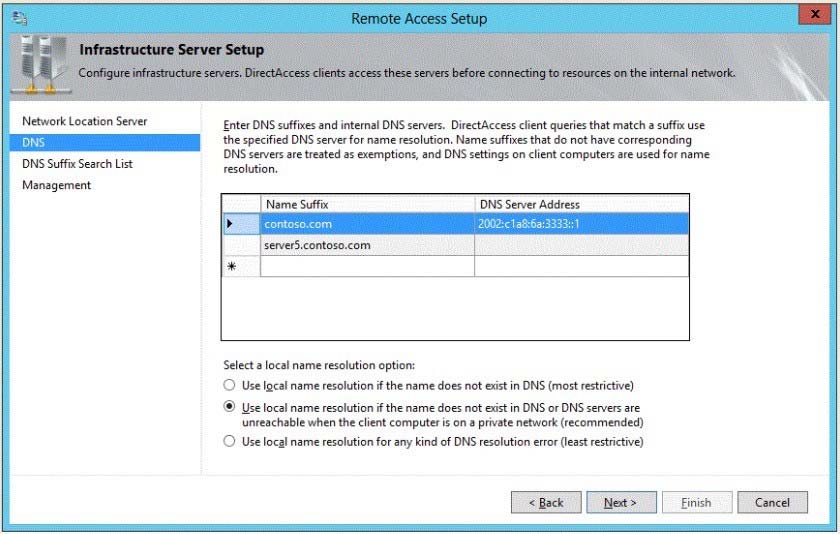

Your network contains an Active Directory domain named contoso.com. All domain controllers run Windows Server 2012 R2.
The domain contains an Edge Server named Server1. Server1 is configured as a DirectAccess server. Server1 has the following settings:
Your company uses split-brain DNS for the contoso.com zone.
You run the Remote Access Setup wizard as shown in the following exhibit. (Click the Exhibit button.)
You need to ensure that client computers on the Internet can establish DirectAccess connections to Server1.
Which additional name suffix entry should you add from the Remote Access Setup wizard?
Comments